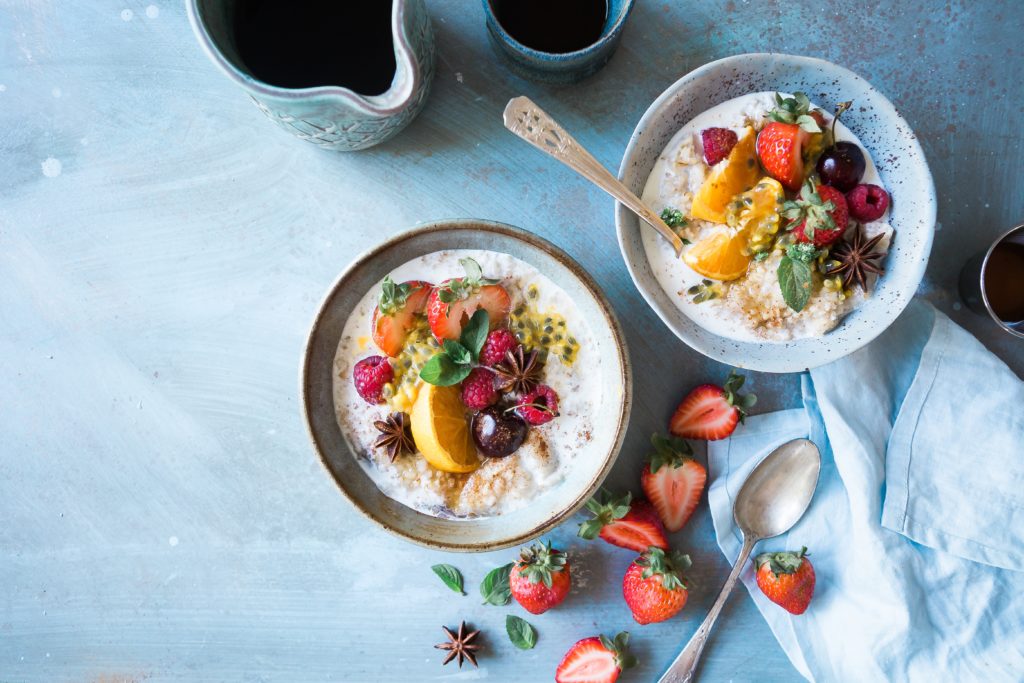The Best 5 Uncommon Food Swaps You Haven’t Tried Yet
Whenever possible, it’s important to eat nutrient-dense food that fills and fuels you. You can still have treats now and then, just try to practice an 80-20 mentality, where you eat well 80% of the time and still budget in 20% treat time. These uncommon food swaps can make that healthy 80% still taste delicious.

Read more to find out some uncommon delicious food swaps you probably haven’t tried yet! These increase vital nutrients such as protein, micronutrients, minerals, and vitamins while tasting delicious.
Keep in mind, these swaps are not meant to reduce calories. Instead, the purpose of these swaps is to increase nutrition, protein, fiber, and feelings of being full while decreasing processed ingredients, additives, and not filling. Food swaps are useful for the purpose of adding, not subtracting, from your meals. Learning how to pick and cultivate healthy habits is a huge step in a fitness journey.
5 Uncommon Food Swaps to Try Today!
Here are 5 uncommon food swaps you probably haven’t tried! They are a great way to make healthy eating easy and delicious as these food swaps simply increase the nutrition of meals.
1. Switch out milk for yogurt
Ok, this one you have to try to buy, but next time you’re craving cereal, try it with vanilla yogurt instead of milk. The cereal stays on top, crunchy and sweet while the vanilla yogurt adds that cut of freshness to the meal. Plus, yogurt, especially Greek yogurt, is low in sugar, high in protein, and will keep you fuller for longer than just regular milk.
Best of all, you can use yogurt instead of milk in other places, like in your green smoothies, or you can substitute it for sour cream in creamy dips.
2. Swap out rice krispies a protein pack counterpart
This is a fun way to get more protein into your diet without sacrificing tasty desserts. Plus, they are very simple to make! All you need to do is follow a rice krispie recipe, which involves melting about 2 tablespoons of butter with 3 cups of marshmallows. Then, instead of rice krispie cereal, add whey protein crisps.
They are easily found on Amazon and are a great way to increase protein in foods. You can even top yogurt with them, add them to chocolate bars, or blend them into smoothies.
For bonus swapping points, I tend to make my own marshmallows too, but even I can admit that’s time-consuming and a hassle on the best days.
3. Love potatoes? Try cooked radishes
This has been around for years since the keto craze took over. As people looked for more and more ways to satisfy cravings, they started to experiment with using radishes as potatoes. Nothing beats a good baked potato, but radishes have amazing nutrients and are pretty simple to cook.
This person does an amazingly simple version that involves baking in an oven and then crisping in an air fryer, but my version is for those who hate working an oven and have no air fryer (I did have one and it broke on me and now I have trust issues).
Boil the radishes for a few minutes then take them out, add some slate, pepper, and other seasonings, and shallow fry them in some avocado oil. Tasty, crispy, and potato-like. Plus, avocado oil is one of the few that can be heated to high temperatures without degrading. Avoid heating olive oil as it can reduce the health benefits of the oil.
For a more crispy texture and even more protein, try adding unsweetened, unflavored whey protein powder. This toasts up well when fried and can improve the radish texture to a crisp.
4. Switch heavy cream in a sauce for hummus
Using hummus in sauces is an amazing way to increase fiber and healthy fats while still providing a smooth creamy consistency in sauces.
Hummus may not be low in calories, but it is high in nutrition. Chickpea hummus, especially homemade versions, has healthy oils and healthy fats that are vital to wellbeing. Hummus usually just consists of chickpeas, tahini (ground sesame), lemon juice, olive oil, salt, cumin, pepper, and garlic. These foods are high in fiber, minerals, and vitamins, making this cream alternative very healthy and filling. Hummus is also high in antioxidants, iron, and magnesium, and has healthy carbs.
There are some brands of hummus that are healthier than others, so if you choose to buy it at a store, look for ones without additives like preservatives or dyes.
5. Instead of juice, grab the fruit
Fruit juice has about the same amount of sugar as a Coke. Worse, it has none of the fiber and natural health benefits that whole fruit has. Choosing a whole fruit instead of its juiced counterpart ensures you get the filling fiber and natural sweetness of the fruit instead of additives and dyes. Whole fruit also has the added bonus of training your taste buds into appreciating and liking natural sweetness, instead of artificial ones.
Even all-natural fruit juice usually contains added scents and coloring. Albeit, the scents and coloring are extracted from the juice used, it is still a processed ingredient that companies get away with labeling as natural.
Plus, fruit juice is a scam, and ‘light’ fruit juice is even worse. You can make your own juice cheaper than a bottle of orange juice, and juices that are labeled ‘light’ are simply watered down.
The Takeaway
Swapping out some foods for others can make healthy eating a lot easier and more nutritious. Good food does not have to taste bad. These uncommon food swaps can make healthy food still taste delicious with high contents of healthy fats, minerals, vitamins, fiber, and protein. Protein and fiber are particularly important as it keeps you full for longer.
Food swaps for healthier versions do not mean bland, nor do they relate to diet culture. They are about making good choices and providing the body with fuel.
Remember that health comes from within, so eat well, exercise, take care of mental health, and watch how wellbeing flourishes. Plus, get your complete guide to gut microbiota health for free here today!





